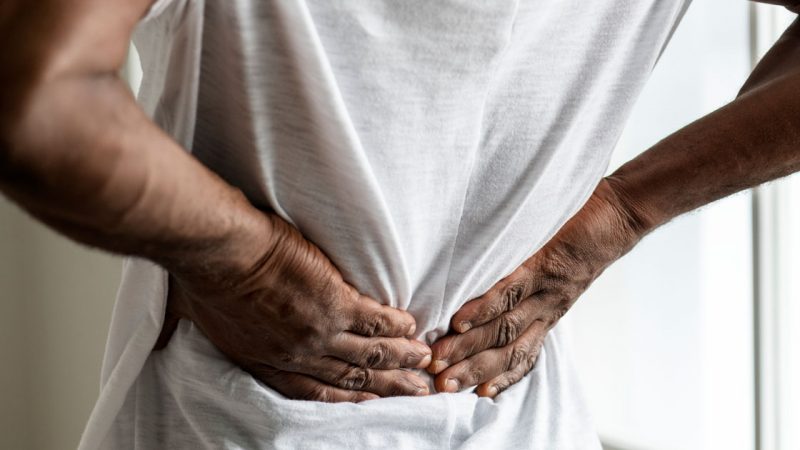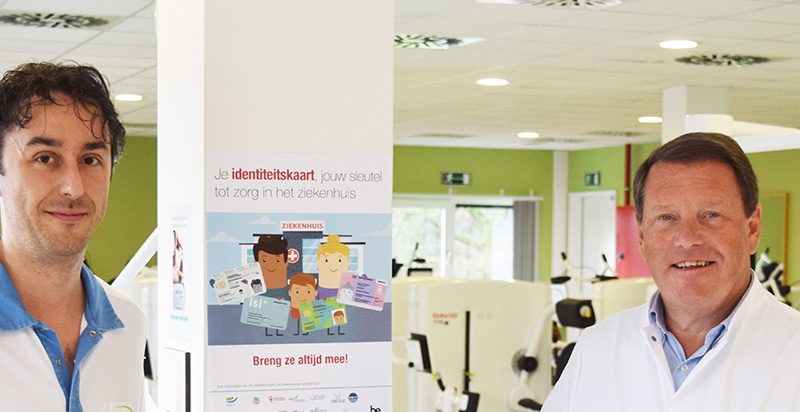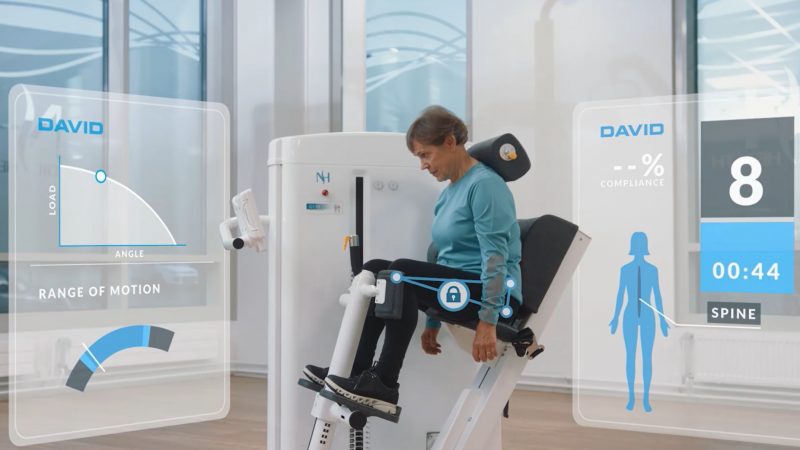Biomechanical and Neuromuscular Foundations
Optimised Biomechanics for Safe, Targeted Training: DSC devices are engineered to guide spinal movements within a safe, controlled range, promoting joint protection and high neuromuscular effect. Individualised setup—including adjustable components and resistance curves—ensures smooth movement without strain, even during fatigue. Patients typically experience pain-free training due to joint stabilisation and even resistance distribution.
Isolation and Neuromuscular Re-education: In chronic back pain, compensatory patterns and muscle deconditioning are common. DAVID devices isolate spinal muscles by minimising contributions from stronger muscle groups through targeted fixation techniques. EMG studies confirm significantly higher activation of the spinal extensors, enabling precise neuromuscular retraining and restoring healthy movement patterns.
Progressive and Personalised Loading: Treatment begins with low loads and a limited range of motion, tailored to the individual’s condition. Over a typical 12-week program, progression is gradual, based on real-time feedback and patient tolerance. Safety features allow for inclusive training, even for patients with degenerative changes or post-surgical conditions.
Real-Time Biofeedback and Monitoring: Each device integrates with the EVE software, providing patients with live visual feedback and clinicians with objective data. Movement quality, exertion, and adherence are monitored in real-time. Strength tests and mobility data inform individualised load settings and track progress. Patients gain motivation, and adherence improves significantly, which directly enhances outcomes.
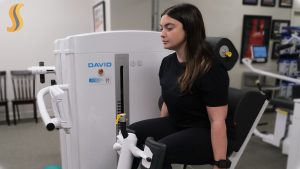
Clinical Implementation and Integration
The DSC is most effective when part of a broader rehabilitation program. Standard implementation includes 2–3 sessions per week over 8–12 weeks, combined with home exercises and patient education. This structured yet adaptable protocol aligns with biopsychosocial principles and modern rehabilitation standards.
Standardised program templates—such as 16 or 24-session protocols—have been clinically validated and can be tailored to individual needs. Progress is continuously monitored using the EVE system, enabling precise adjustments. Multidisciplinary integration enables orthopaedic surgeons, physiotherapists, and case managers to collaborate using shared, objective data.
Clinical Efficacy: Outcomes and Benefits
Pain Reduction: Multiple studies document significant reductions in pain after DSC therapy. For example, over 70% of patients with moderate-to-severe disability improved to mild or minimal disability levels within six weeks. Long-term studies also demonstrate sustained improvement up to one year post-treatment.
Functional Improvement: Objective measures show increased strength, endurance, and spinal mobility. Both young and elderly populations experience gains, confirming the concept’s versatility. Progressive mobilisation helps patients overcome movement fears and regain functional independence.
Disability and Return-to-Work: DSC therapy has been shown to reduce disability scores and absenteeism significantly. Workplace programs have demonstrated a reduction of up to 78% in sick days due to back pain. One study reported annual healthcare savings of €1,390 per patient due to reduced need for interventions and faster return to work.
Patient Adherence and Satisfaction: High engagement is a hallmark of the DAVID approach. Patients are motivated by feedback and measurable progress. Clinics report high completion rates and overwhelmingly positive feedback, with many patients expressing willingness to continue therapy or recommend it to others.
Applicability Across Populations: Adolescents, working-age adults, and elderly patients have all benefited from the DSC. It can be adapted for postoperative rehabilitation and specific conditions, such as radiculopathy. The system’s safety features and adjustable protocols allow for broad clinical inclusion.
Cost-Effectiveness: The economic impact of DSC has been extensively evaluated. Studies show reduced healthcare usage, improved productivity, and high ROI. One insurance-based program reported an ROI of 4.7:1, with substantial savings in medical visits, imaging, and medication use.
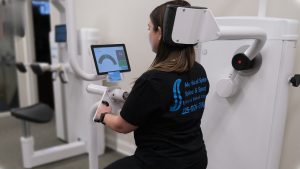
Conclusion: A Data-Driven Rehabilitation Model
The DAVID Spine Concept delivers a robust, evidence-based solution for CNSLBP by combining biomechanically precise devices, validated training protocols, and data-driven software. It empowers patients to take control of their recovery, fosters multidisciplinary collaboration, and ensures consistent clinical outcomes.
For physiotherapists and clinic operators, DSC offers a reproducible, scalable approach that enhances the quality of care and clinic performance. For physicians and surgeons, it represents a reliable conservative pathway that supports patient outcomes and reduces the need for surgery. As the burden of back pain continues to grow, the DAVID Spine Concept stands out as a proven, scalable, and patient-centred answer to one of healthcare’s most persistent challenges.
References
- Custers et al. (2024). Life. Narrative review on CNSLBP and multidisciplinary treatment strategies.
- Langella et al. (2021). Spine Journal. Comparison of 16 vs. 24 session DAVID Spine programs.
- Fehrmann et al. (2017). Zeitschrift für Orthopädie und Unfallchirurgie. Psychosocial subgroup outcomes in DAVID-based training.
- Anandani et al. (2015). Retrospective outcome study on DAVID device-based therapy in 235 patients.
- Taimela et al. (1996). Spine. Functional restoration with DAVID equipment.
- Kankaanpää et al. (1999). Spine. EMG activity of lumbar muscles during DAVID training.
- Müller et al. (2019). BMC Musculoskeletal Disorders. Cost-effectiveness of DAVID-based multimodal program.
- Daschner et al. (2006). Orthopädische Nachrichten. Long-term cost savings with DAVID (FPZ program).
- Hollmann et al. (2013). Evaluation report of DAVID training in Germany (FPZ).
- Internal outcome report (2023). GetBack Australia. One-year follow-up study in >500 patients.
- Mercedes-Benz Spain (2020). In-house prevention program using DAVID Spine Concept.
- Mining Company Outcome Report (2021). Russia. Reduction in chronic LBP and absenteeism.
- Adolescent Back Pain Study (2024). DAVID Spine results in youth population.
- Geriatric RCT (2022). DAVID device-based rehab in elderly post-hospitalization.
 Hong Kong
Hong Kong 






















